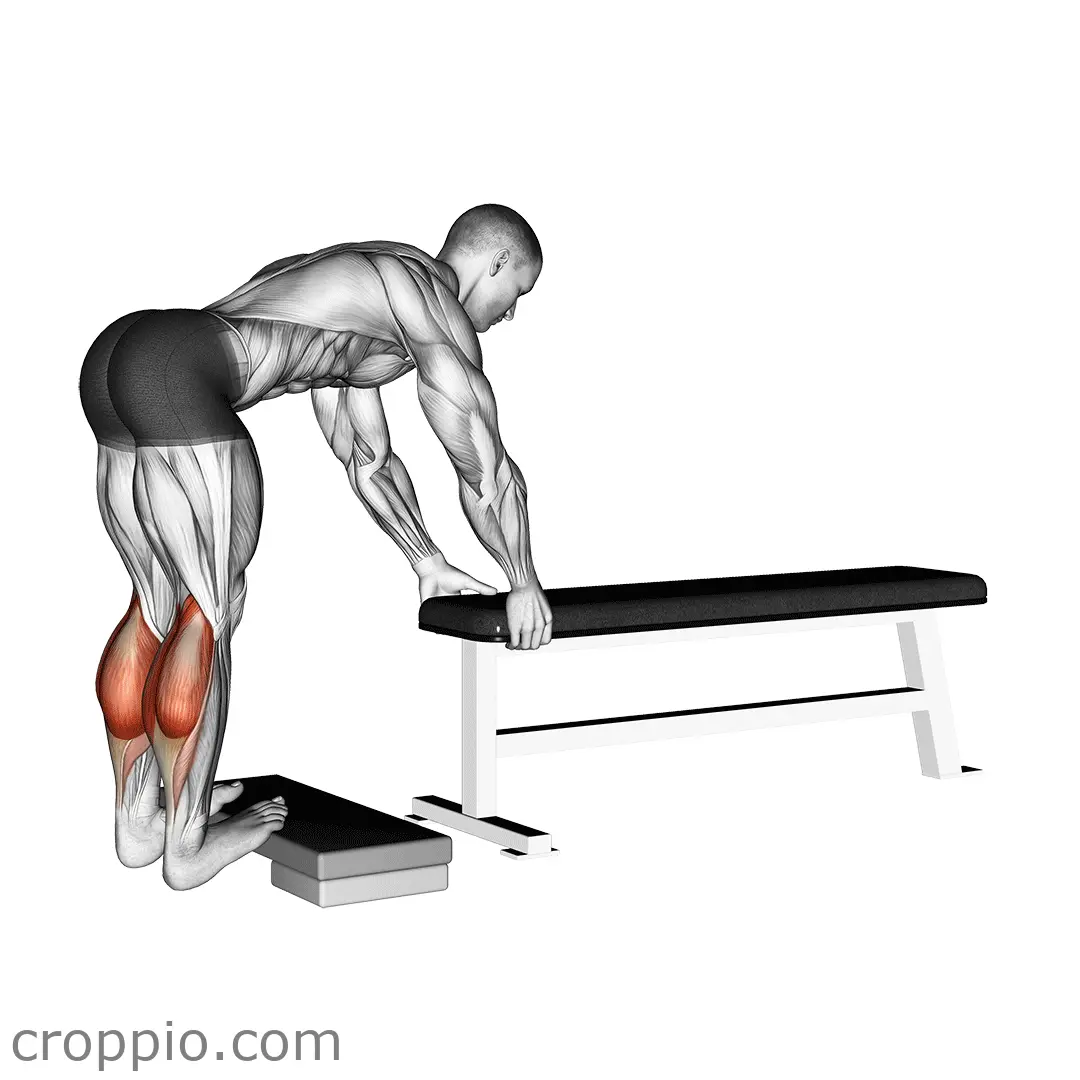Negative Calf Raise

Muscles Involved
The negative calf raise primarily targets the soleus and gastrocnemius muscles, which are key components of the calf. The soleus is responsible for stabilizing the ankle during movement, particularly when the knee is bent, while the gastrocnemius contributes to extending the ankle joint when the knee is straight. In addition to these primary movers, the negative calf raise also engages the tibialis posterior and other stabilizing muscles of the lower leg, promoting better overall balance and shin stability.
Top Mistakes
- Incomplete Range of Motion: Failing to lower the heels fully may limit the effectiveness of the exercise.
- Rushing the Movement: Performing the exercise too quickly can lead to improper form and reduce muscle engagement.
- Neglecting Foot Position: Keeping toes pointed in the wrong direction can detract from the workout's benefits.
- Overloading Weight: Using too much weight can compromise form and increase the risk of injury.
Execution Tips
- Establish a Solid Base: Stand with your feet shoulder-width apart, ensuring your weight is evenly distributed across both feet.
- Control the Eccentric Phase: Slowly lower your heels below the starting position, focusing on a smooth, steady motion.
- Keep Your Core Engaged: Maintain a neutral spine and engage your core throughout the movement for optimal balance.
- Focus on Your Breathing: Inhale as you rise and exhale during the descent to synchronize your body movements with your breath.
Workouts
The negative calf raise can be effectively incorporated into your workout routine with moderate to high repetitions for muscle endurance and strength. Aim for 3-4 sets of 10-15 repetitions, adjusting weight as needed. Consider pairing this exercise with complementary moves such as standing calf raises, seated calf raises, and squats to create a comprehensive lower body workout. Incorporating it into a leg day routine will maximize efficiency and muscle engagement.
Conclusion
Incorporating negative calf raises into your exercise regimen delivers significant benefits, including improved strength, stability, and overall aesthetics of the lower legs. By enhancing the eccentric strength of your calf muscles, you not only build better-defined calves but also contribute positively to functional movements in daily life and athletic performance. This exercise is a valuable addition to any strength training program, making it essential for anyone seeking to advance their fitness journey.



